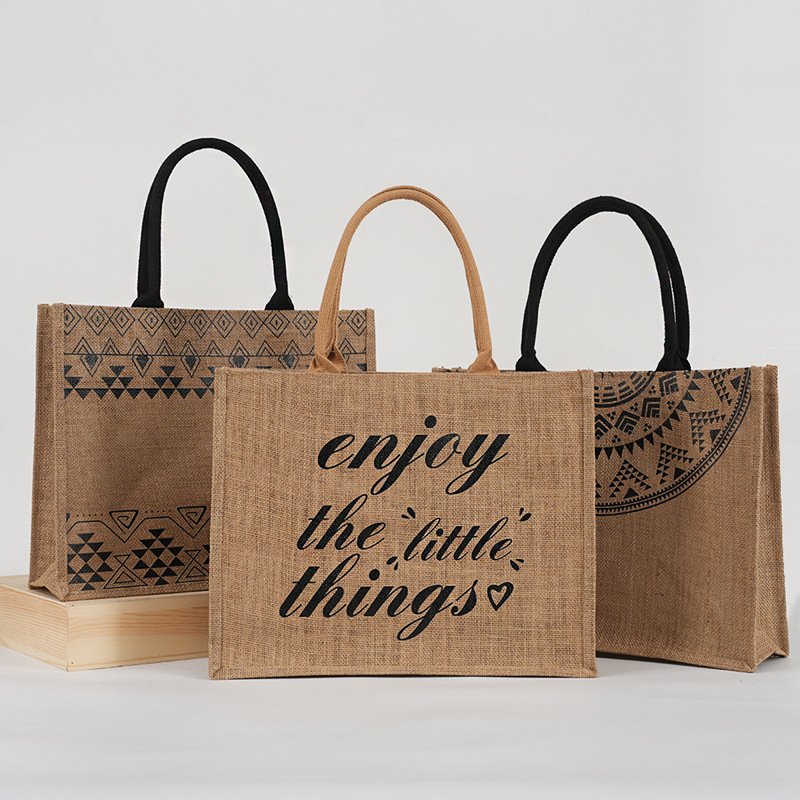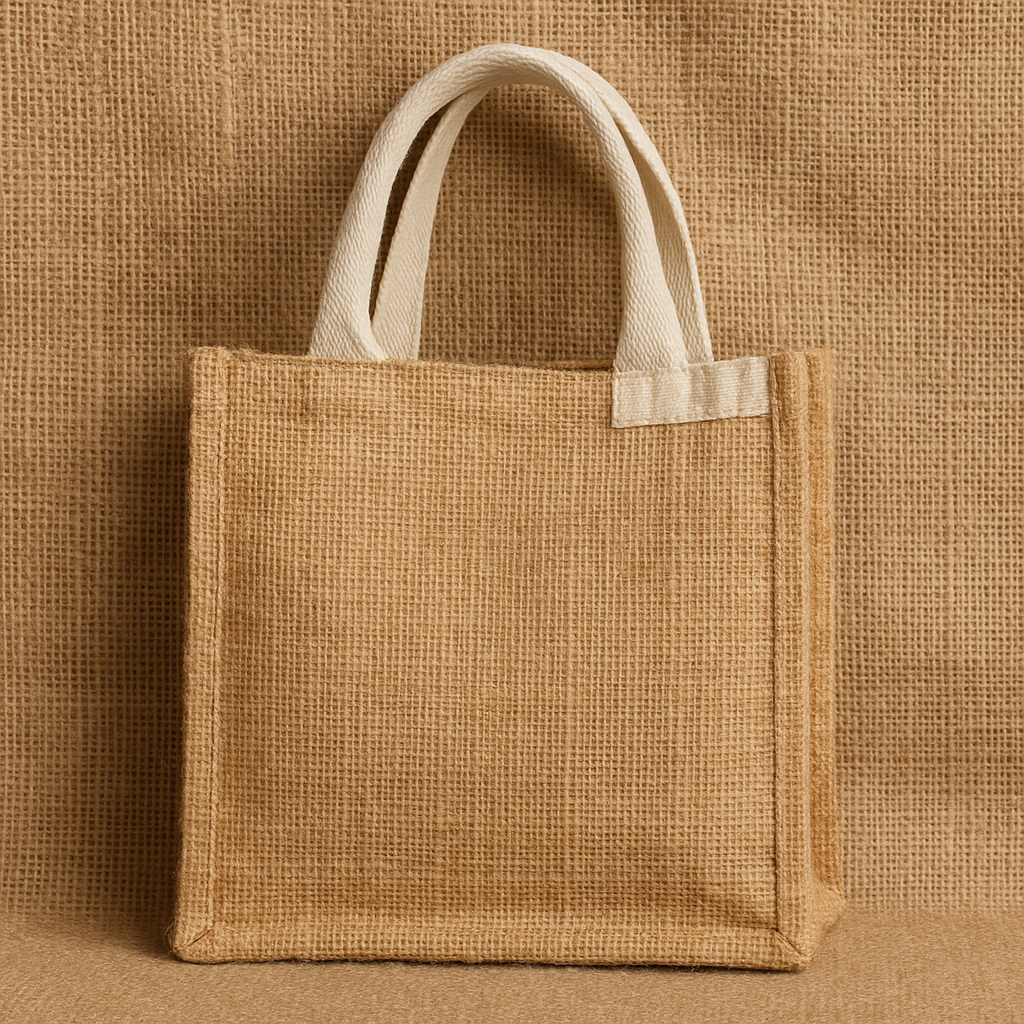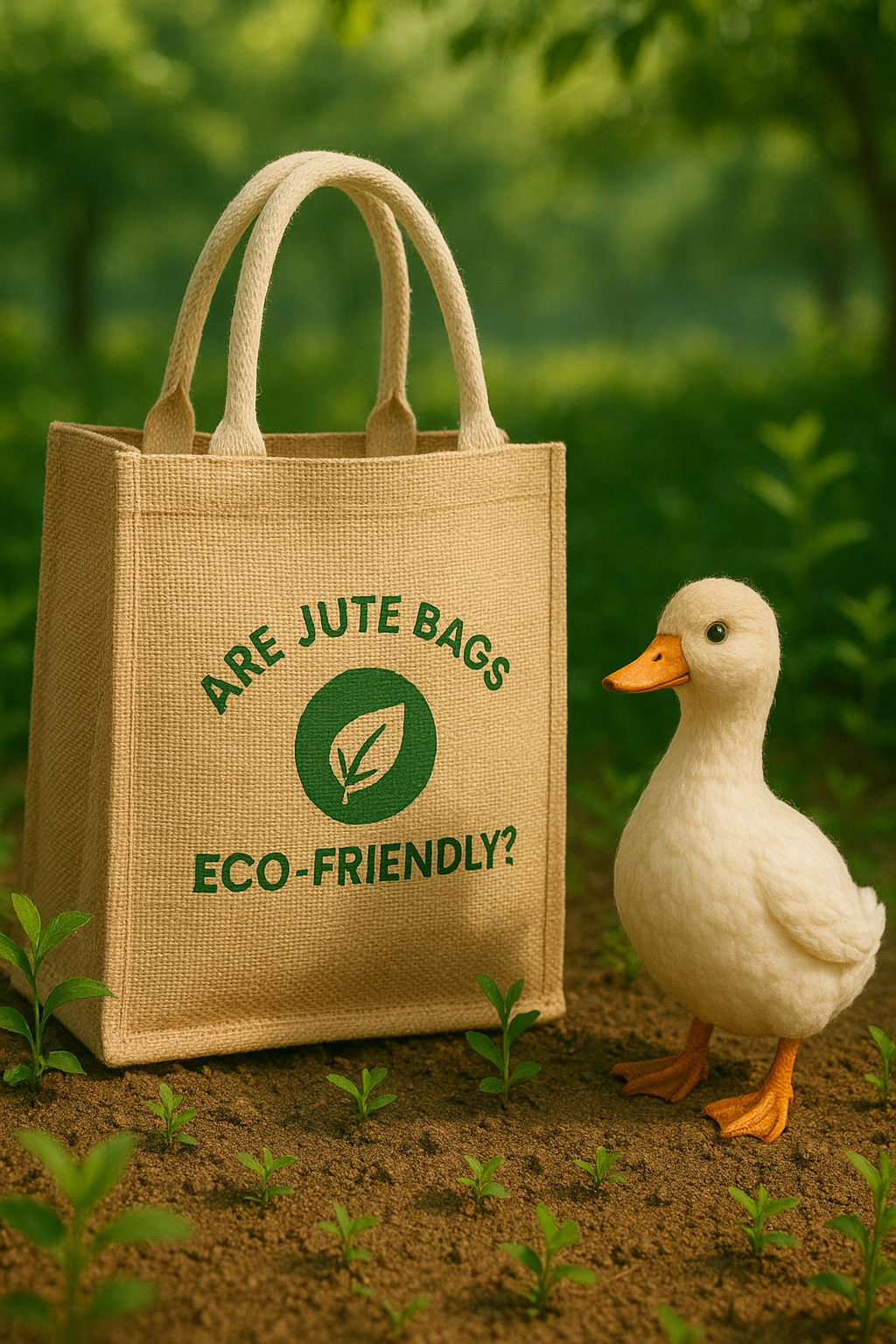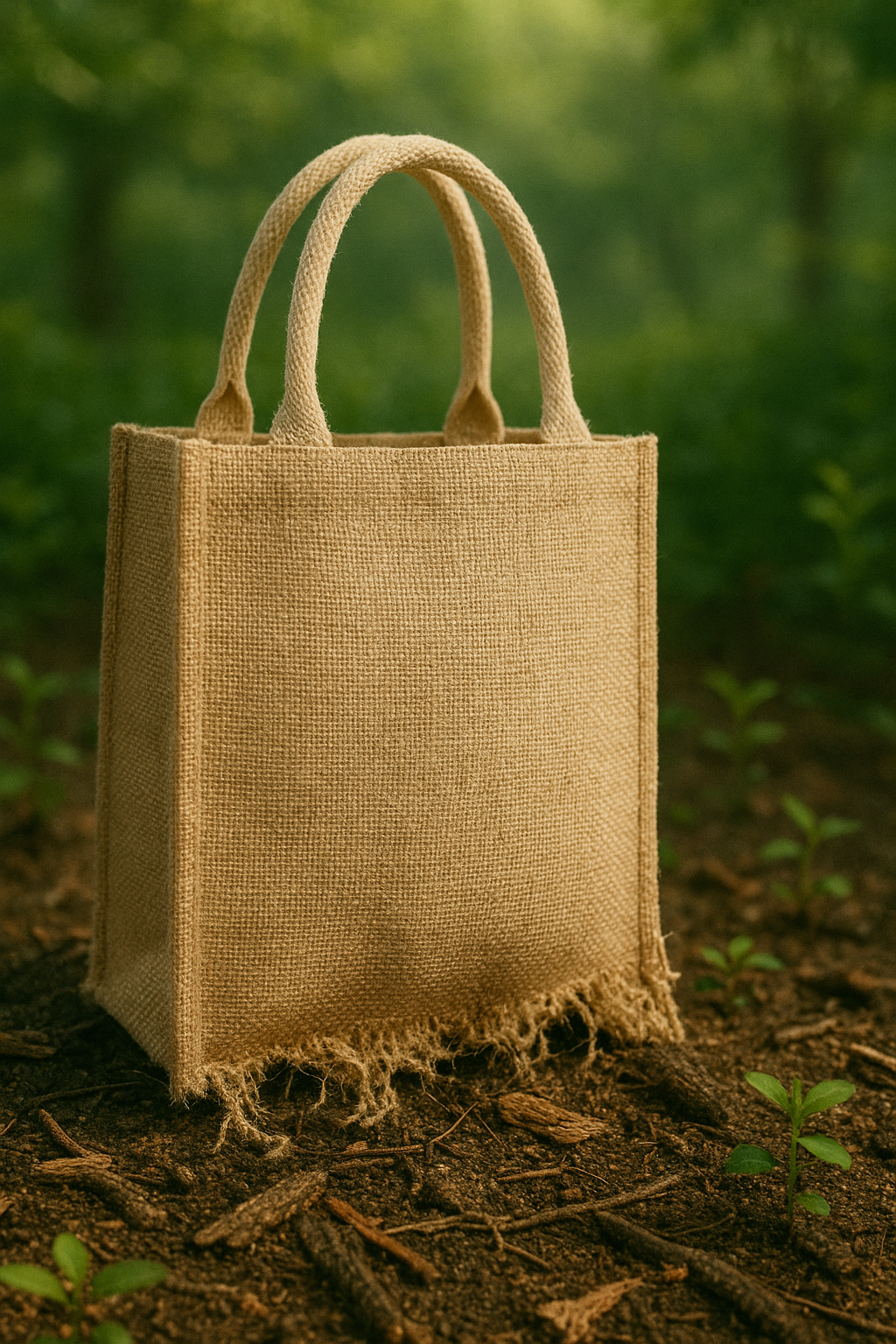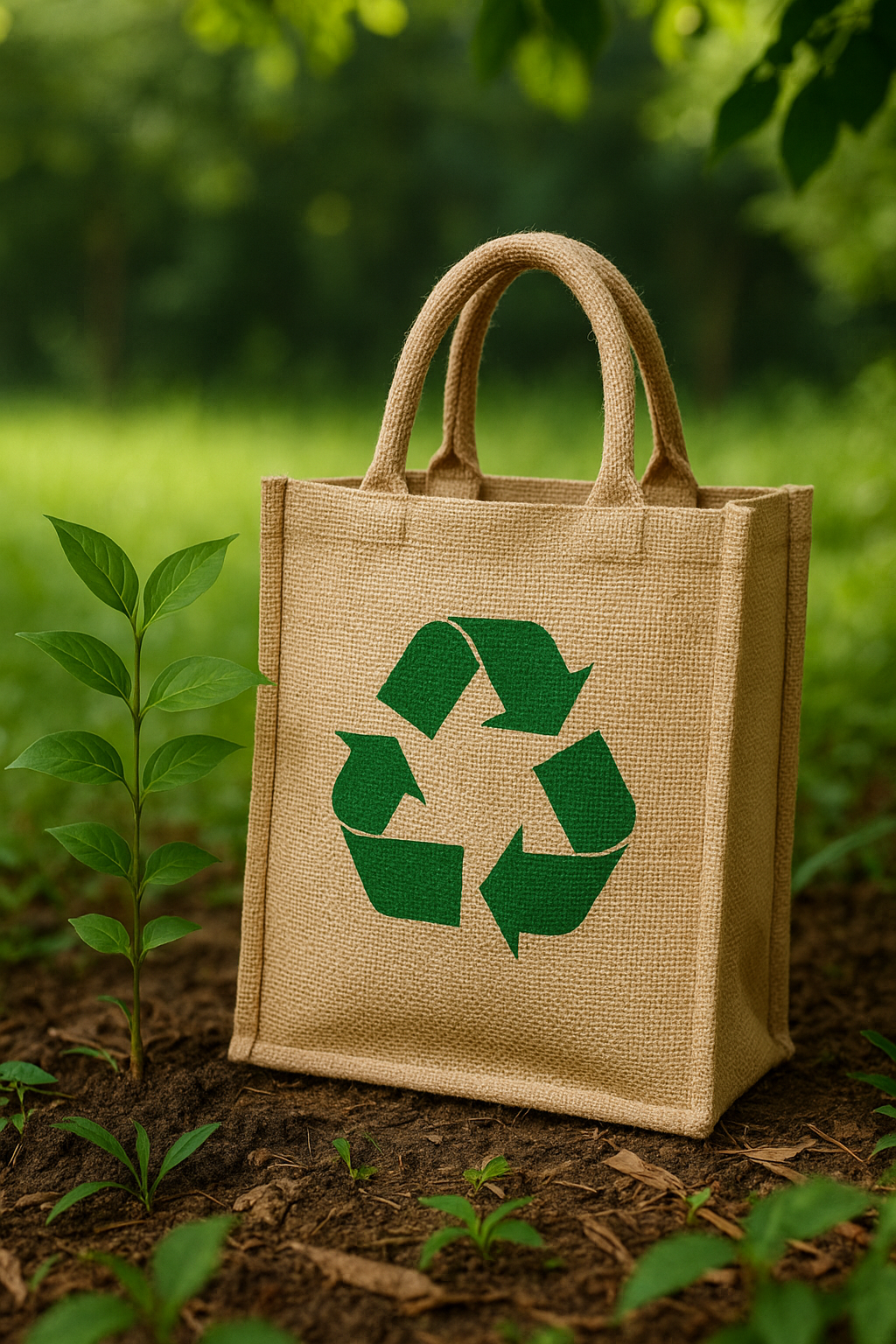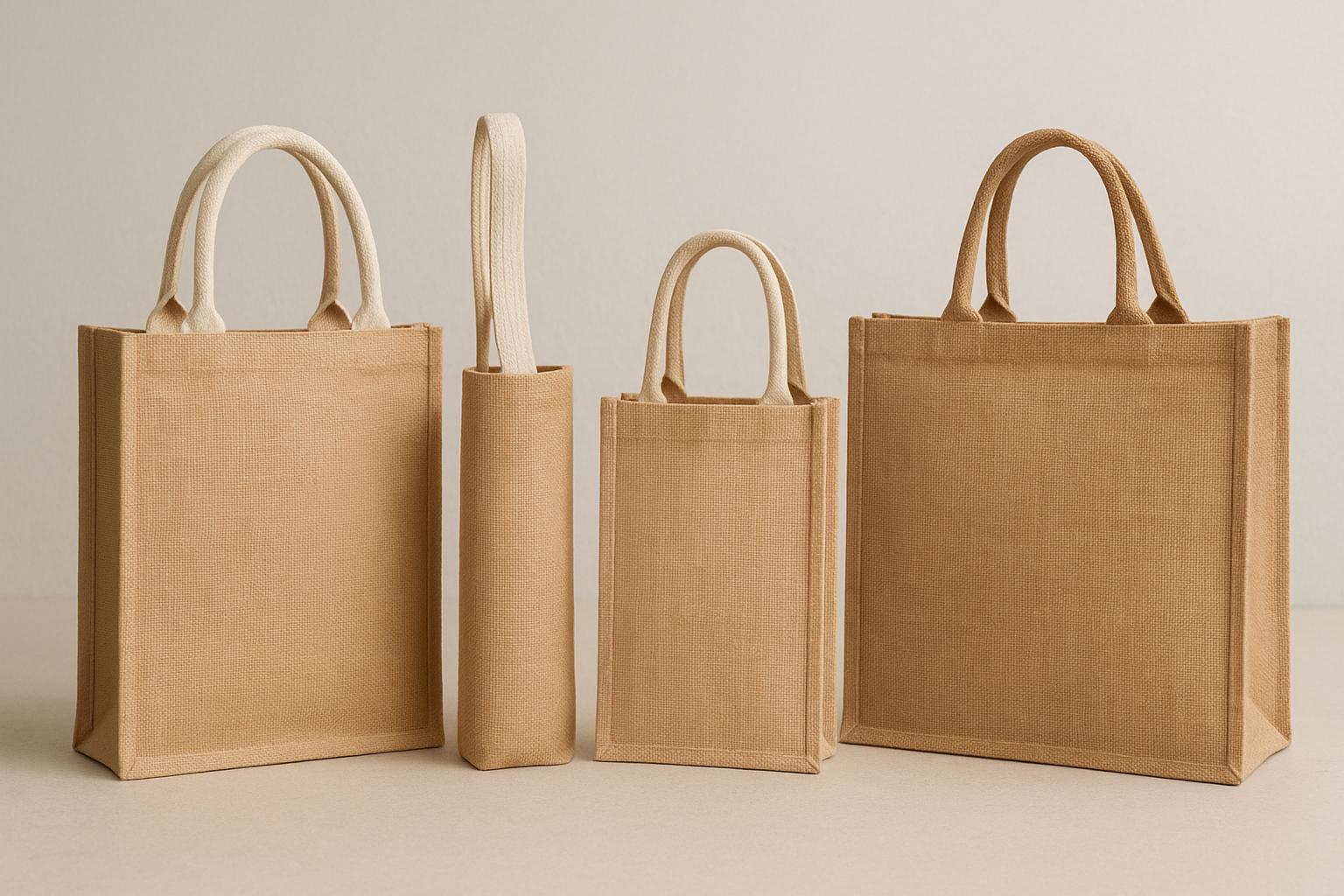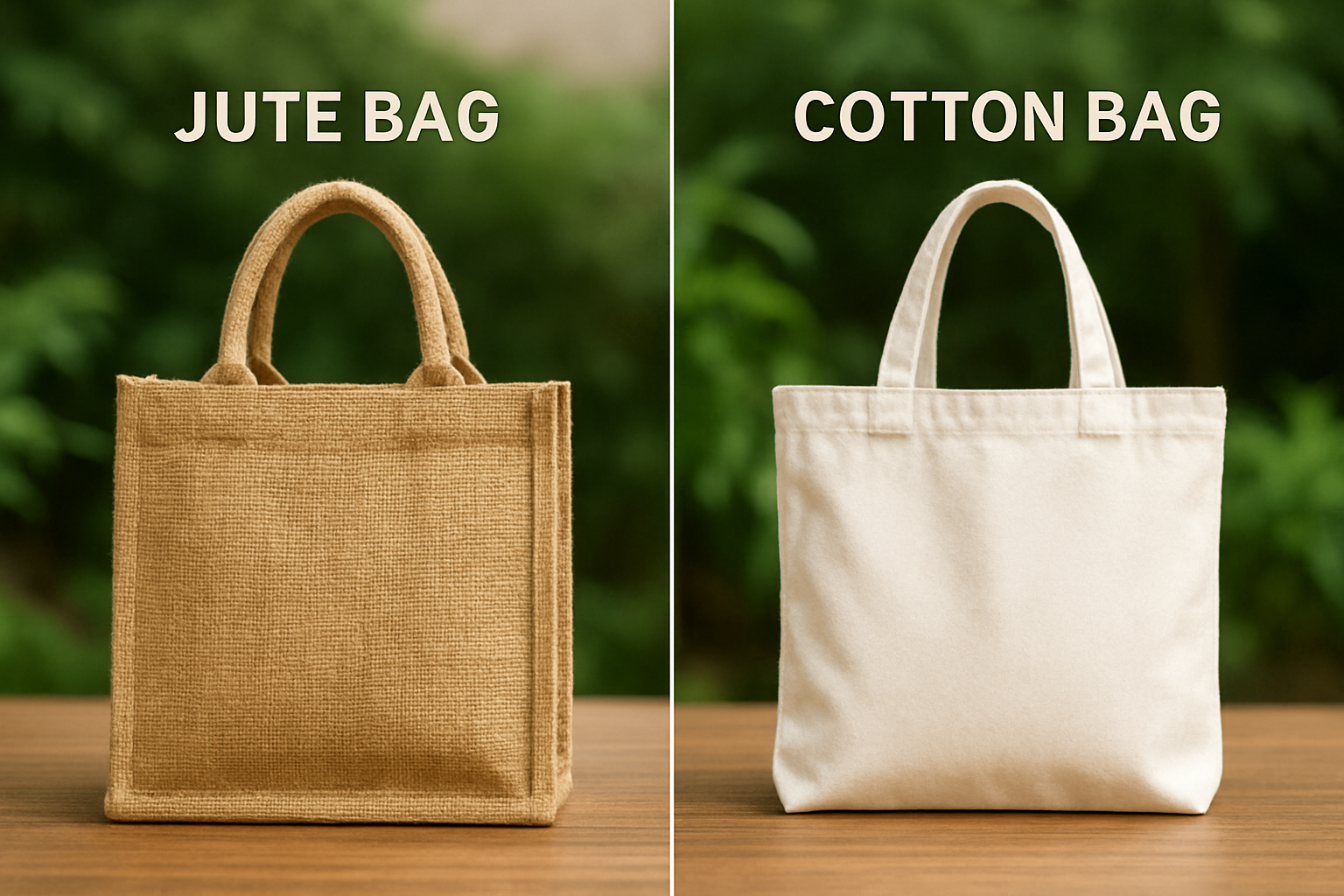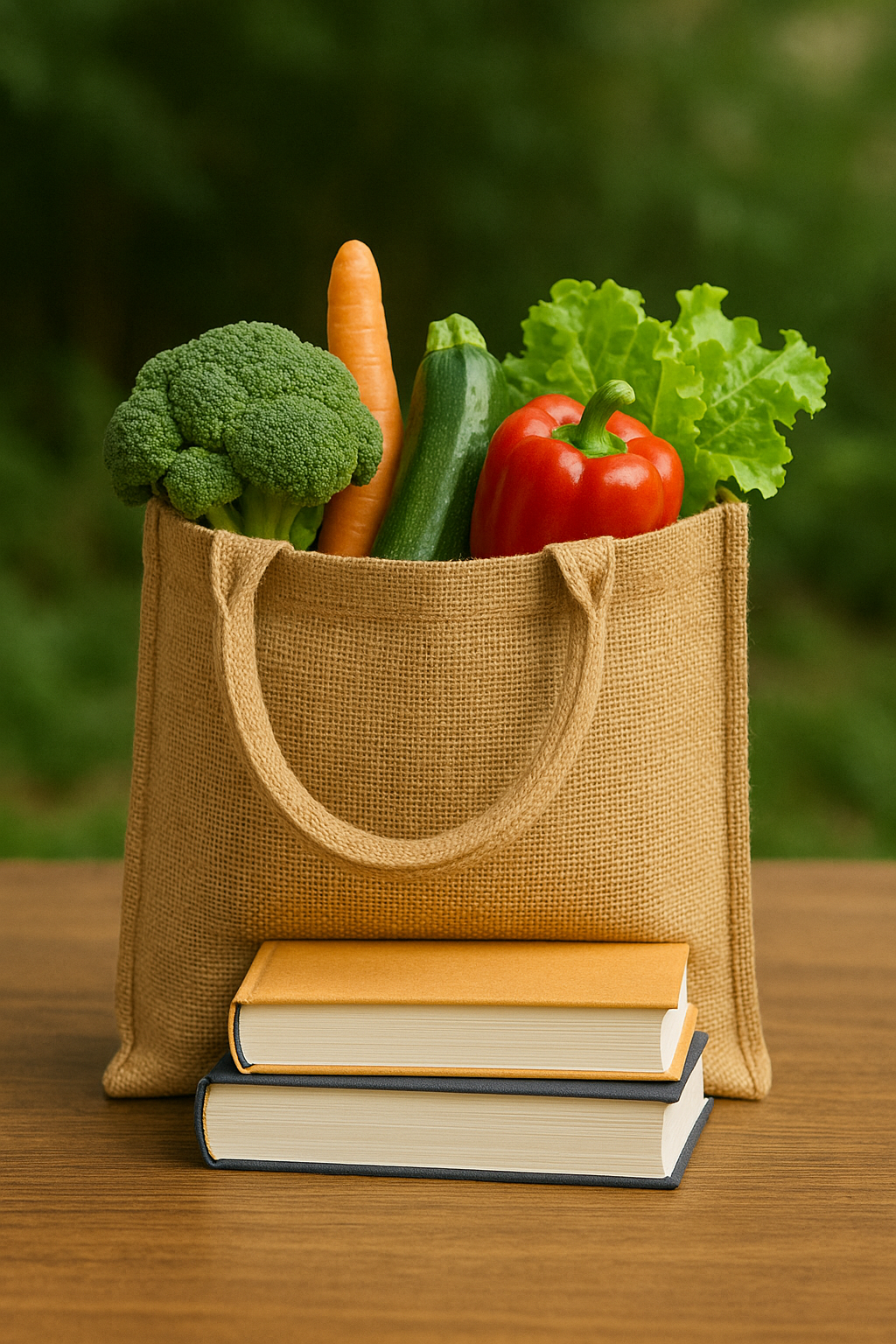Tired of plastic waste and searching for a better packaging option? Jute bags might be the perfect natural alternative you’ve been looking for.
A jute bag is a reusable, durable sack made from natural jute fiber1, often used as an eco-friendly alternative to plastic bags.
Jute bags are gaining popularity for their sustainability and strength. Let’s explore what makes them so useful and unique.
What materials are jute bags made from?
Jute bags are made from a long, soft, shiny plant fiber called jute, usually blended with cotton or other natural threads for added durability.
Jute bags are made primarily from jute fibers, a natural material sourced from the jute plant, sometimes combined with cotton or RPET2.
Natural vs. Blended Fibers
Jute is a vegetable fiber spun into coarse threads, usually harvested in South Asia. Some jute bags are 100% pure jute, while others mix jute with cotton or recycled PET to increase flexibility or enhance appearance. This combination of natural fibers enhances strength and adds versatility to the product's final texture and finish. For example, cotton-laminated jute is softer to touch and visually more appealing—ideal for fashion-conscious branding or upscale promotional use.
In our factory, we’ve also customized bags using GRS-certified RPET3 inner linings for clients focused on sustainability and product aesthetics. This option makes the bag waterproof and more suitable for groceries or wet environments like restaurants and beach resorts.
| Type | Material Composition | Common Use |
|---|---|---|
| Pure Jute | 100% jute fiber | Grocery bags, tote bags |
| Jute-Cotton | Jute + cotton lining | Fashionable shopping bags |
| Jute-RPET | Jute + recycled PET | Promotional and custom bags |
Our buyers often request custom fabric blends to meet the standards of specific markets, particularly in Europe and North America where consumer expectations around sustainability are higher.
Are jute bags eco-friendly?
If you're concerned about pollution and want an eco-friendly solution, jute bags are one of the best options available today.
Yes, jute bags are eco-friendly because jute is a renewable, compostable plant fiber4 that requires minimal resources to grow.
Why Jute Has a Low Environmental Footprint
Jute is considered one of the most eco-efficient crops in the world. It grows quickly, requires minimal fertilizer, and thrives in monsoon climates without irrigation. Unlike plastic, which takes centuries to decompose, jute biodegrades naturally in the environment. Plus, since jute is often grown on marginal lands, it doesn’t compete with food production.
| Benefit | Details |
|---|---|
| Low Water Usage | Needs far less water than cotton |
| Pesticide-Free | Grows without chemicals |
| Fast Growing Cycle | Ready to harvest in 4-6 months |
| Biodegradable | Breaks down naturally in soil |
In my own production lines, we promote jute as part of a full-circle sustainability story. For example, one client from Canada requested FSC-paper hangtags and jute bags printed with soy ink to ensure the entire product line aligned with their corporate sustainability goals.
Are jute bags biodegradable?
Worried about plastic bags clogging up landfills? Jute bags offer a sustainable, biodegradable solution that decomposes safely in the environment.
Yes, jute bags are biodegradable. They naturally decompose in soil within a few months5 without releasing toxins.
Understanding Jute’s Natural Breakdown Process
Jute decomposes in 2 to 6 months when exposed to soil and moisture. Unlike synthetic materials, it does not release microplastics or toxic residues into the environment. This is one reason many supermarkets and government agencies are switching to jute for reusable bags.
Another key point: even when disposed of improperly, jute causes minimal harm to animals and marine ecosystems. Plastic bags, by contrast, often end up in oceans, choking wildlife or breaking down into microplastic pollution.
| Material | Biodegradation Time | Environmental Impact |
|---|---|---|
| Jute | 2-6 months | Non-toxic, soil-friendly |
| Plastic (HDPE) | 500+ years | Releases microplastics |
| Cotton | 1-5 months | Biodegradable, but resource-intensive to grow |
At trade shows like Canton Fair and Ambiente, I often get questions from buyers about disposal methods. With jute, it’s easy—simply compost or bury it in the soil.
What are the environmental benefits of using jute bags?
Still unsure if switching to jute makes a difference? The environmental benefits of jute bags are both broad and long-term.
Jute not only replaces plastic but also improves environmental health through carbon capture6.
Beyond the Bag: The Environmental Value
Jute not only replaces plastic but also improves environmental health through carbon capture. Each hectare of jute cultivation absorbs about 15 tons of CO2 and releases 11 tons of oxygen during its growth cycle. Furthermore, jute farming rejuvenates the soil, leaving organic residue that enhances the next crop’s productivity.
Jute bags also play a role in shaping consumer habits. When companies give them out as promotional items, they often influence shoppers to reuse bags rather than opting for single-use plastics.
| Environmental Benefit | Description |
|---|---|
| Carbon Sequestration | Absorbs more CO2 than trees |
| Waste Reduction | Replaces plastic in retail and packaging |
| Soil Health | Leaves organic matter that improves soil |
| Sustainable Economy | Supports eco-friendly farming and jobs |
I’ve worked with European supermarket chains that order millions of jute bags yearly, branding them as “green lifestyle essentials.” This strategy not only boosts environmental awareness but builds positive brand perception among eco-conscious customers.
What are the common types of jute bags?
Whether you're packaging products or planning a promotional event, there's a jute bag style to suit every need.
Common jute bag types include tote bags, wine bags, promotional bags, and shopping sacks, each suited to different uses.
Matching Bag Types to Business Needs
Jute bags come in many styles, each tailored to a specific use. In our production line, we've developed custom shapes and features like zippers, button closures, and internal pockets to meet our B2B clients' needs.
We even produce specialty jute bags for seasonal marketing—such as Christmas-themed bags for retail stores or jute lunch bags for school campaigns.
| Bag Type | Description | Ideal Use |
|---|---|---|
| Jute Tote Bag | Large with handles | Shopping, promotional branding |
| Drawstring Sack | Pouch with rope closure | Gift packaging, small product bags |
| Jute Wine Bag | Slim with dividers | Bottle packaging, gifting |
| Laminated Jute | Coated inside for water resistance | Food delivery, groceries |
We also produce jute backpacks and conference bags on request. These are perfect for brands attending expos or university giveaways.
What’s the difference between jute bags and cotton bags?
Trying to choose between cotton and jute bags? Each has unique traits that may suit different buyers or use cases.
Jute bags are more rigid, eco-friendlier, and cheaper to produce, while cotton bags are softer and better for fashion.
Fiber Showdown: Jute vs. Cotton
Cotton is widely used in the fashion industry due to its softness and flexibility. However, it has a much higher ecological cost in terms of water and pesticides. Jute, on the other hand, is stronger, holds its shape better, and is cheaper to manufacture in large quantities.
| Feature | Jute Bags | Cotton Bags |
|---|---|---|
| Durability | High | Moderate |
| Texture | Coarse | Soft |
| Eco-Friendliness | Very High | Medium |
| Cost | Low | Higher |
| Use | Packaging, retail, promo | Apparel, daily carry bags |
When advising clients, I usually recommend cotton bags for events where touch and aesthetics matter more—like fashion shows or cosmetic launches. Jute is better for supermarket campaigns, promotional gifts, and eco-branding.
How much weight can a jute bag hold?
Worried if your jute bag can handle heavy groceries or bottles? Good news—it probably can.
Jute bags can typically hold between 10 to 15 kilograms, depending on the weave and handles7.
Strength by Design
Thanks to its strong, thick fibers, a well-stitched jute bag can carry surprisingly heavy loads. In fact, we’ve had clients use them for carrying heavy catalogs, beverage bottles, or even tools during trade shows.
In one case, a Canadian food brand ordered reinforced jute bags to hold meal kits. Each kit weighed over 10 kg, but the bags held up perfectly—earning them praise in customer reviews.
| Bag Style | Weight Capacity (kg) | Notes |
|---|---|---|
| Basic Jute Tote | 10 | General use |
| Reinforced Tote | 12-15 | With extra stitching |
| Jute Grocery Bag | 10-12 | Designed for daily groceries |
| Wine Jute Bag | 5-6 | Supports 2-3 wine bottles |
Always consider the stitching method and handle type when placing large orders. Double-stitched handles and laminated interiors significantly boost weight tolerance and durability.
Conclusion
Jute bags are sustainable, strong, and biodegradable alternatives to plastic or cotton, offering real environmental and practical advantages.
-
Understand what jute fiber is and why it's ideal for reusable eco-bags. ↩
-
Learn what RPET is and how it reinforces jute bags. ↩
-
Discover the significance of GRS certification in eco-product manufacturing. ↩
-
See how jute farming supports renewability and low ecological impact. ↩
-
Know how jute biodegrades safely and quickly in natural conditions. ↩
-
Explore how jute crops help absorb CO2 and enhance soil. ↩
-
Review how design features influence jute bag strength and weight capacity. ↩

